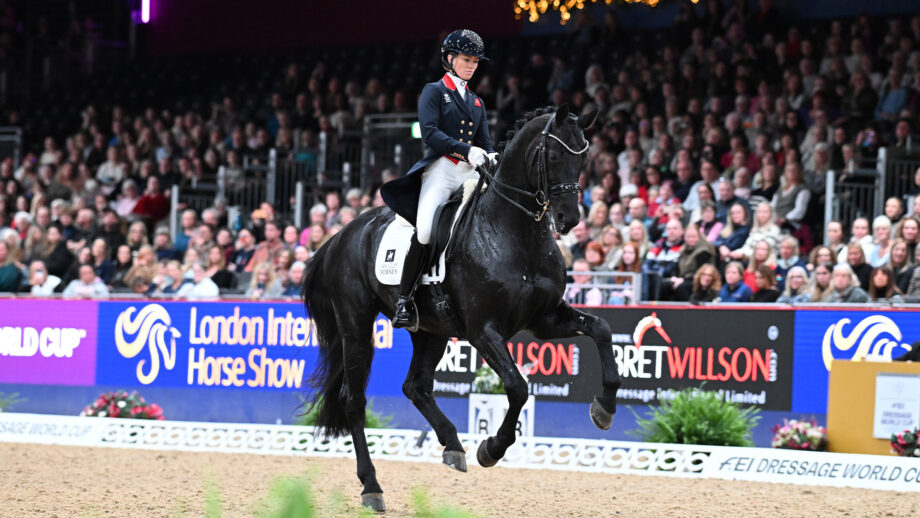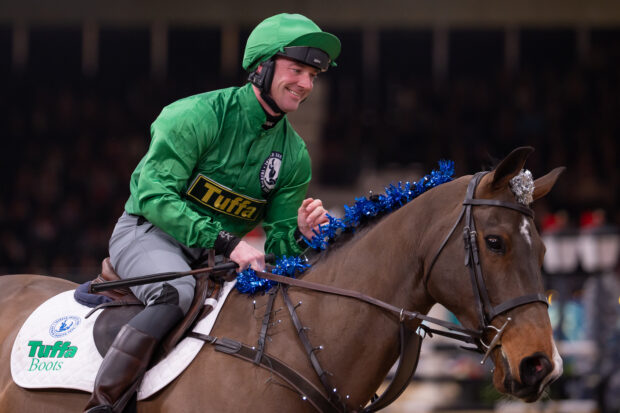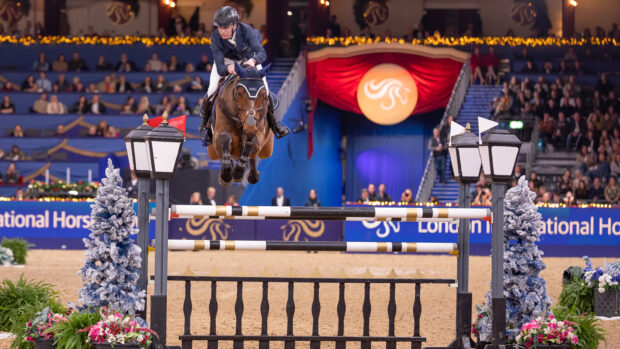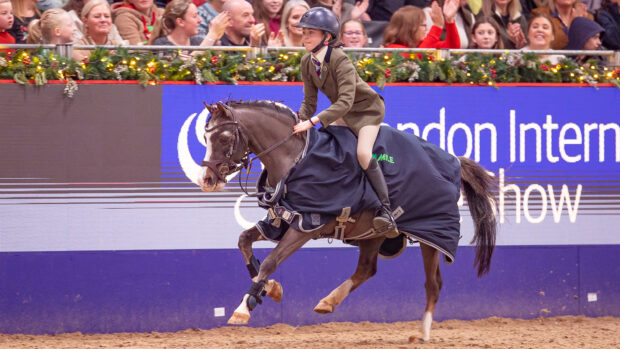Visitors to the London International Horse Show today were treated to a “Dressage Unwrapped” demonstration, including a section with Carl Hester.
Here are eight snippets of wisdom we picked up from Carl…
1. Transitions are key to getting the horse’s concentration and getting him to use his body.
“Many of you will know you get told to do lots of transitions when you’re having a lesson,” says Carl. “They help to bring the horse on he aids and relax the horse.”
Carl also emphasised that canter-walk-canter transitions are part of a horse’s preparation towards doing flying changes.
2. The way we sit when we ride is very important.
“Make sure you sit in the central part of the horse,” says Carl. “And you need a straight liine from the ear to the shoulder to the hip to the heel – I call them riding school lines.
“Make sure you are upright. You wouldn’t stand on the ground leaning forward to backwards. If someone pulled the horse out from under you, would you land on your feet or tip backwards or forwards?
“The reason we have to sit like that is to be independent of the reins and legs. If you’re using your hand or leg to keep on the horse, then it’s very difficult to ride with independent aids.”
3. Without a rider, the horse balances himself with his neck.
“If you ride with the neck short or a lot of weight in the hand, you’ll find you’re doing the balancing and we want to try to get self-carriage,” says Carl. “Often test sheets say, ‘lack of self-carriage’ or if you’re doing well, the judge misses out, ‘lack of’! It is difficult to keep a horse in balance all the time.
Carl emphasised that riders must still ride forwards in the canter to walk transition and the horse has to take weight behind.
“If the horse tips forward, he will jog, but if he’s sitting, he’s able to make a clean transition to walk,” he says.
4. There’s no such thing as the perfect (human) body for dressage.
“You can be small or tall; whatever size you come in you can learn to sit independently on the horse,” says Carl.
5. The walk is very important in dressage, whether you’re doing novice or grand prix.
“The walk has a coefficient of two all the way up the levels and when you have seven judges [at top level] you need to know you can get a good mark for your walk,” says Carl.
“In the scales of training, the first thing is rhythm so the rhythm has to be correct in walk. Pacing is how a camel walks – we don’t want the horse to walk like that or we won’t get a high mark. The walk has to be four-beat, with a clean rhythm.
6. You don’t have to buy a spectacular trot.
“Everyone thinks you have to buy a spectacular horse for dressage, but you don’t,” says Carl. “You have to buy something with a leg at each corner, that wants to go forward and then you can change things, especially the trot. The work ethic is important when picking a horse – the horse has to want to go forward and work.
7. Basics matter.
“When I started dressage, I was told the horse must stand still and square when I get on, when I stop to talk and when I get off,” says Carl.
8. Old horses can teach riders so much.
At the end of the demonstration at London Horse Show, Carl Hester brought out his London 2012 gold medallist Uthopia, under Amy Woodhead, and the old campaigner showed he still has all the tricks. The main horse used in the session was a six-year-old by Uthopia, who was bred and ridden by Henriette Andersen.
“Uthopia left home at 3am to come here – he hasn’t been out of my yard for five years,” says Carl. “When he got here he was so excited it took five of us to catch him in the stable!
“He’s getting older, but at 21 he looks a million dollars and can still teach people how to ride grand prix. I wanted to bring him here to meet his son and show you what old horses can do if you look after them.”
You might also be interested in:

Who will win the dressage World Cup qualifier at the London International Horse Show?

How to get to Excel for the London International Horse Show by rail, road, river – or cable car

How to watch London International Horse Show: TV guide, live streaming, free BBC coverage

Check out what’s happening when at London International Horse Show

Subscribe to Horse & Hound magazine today – and enjoy unlimited website access all year round
Keep up to date with all of the action from London International, including breaking news and behind the scenes insight from each day of the show, with no limit on how much you can read, from as little as £1 per week with a Horse & Hound unlimited website subscription. Join now




